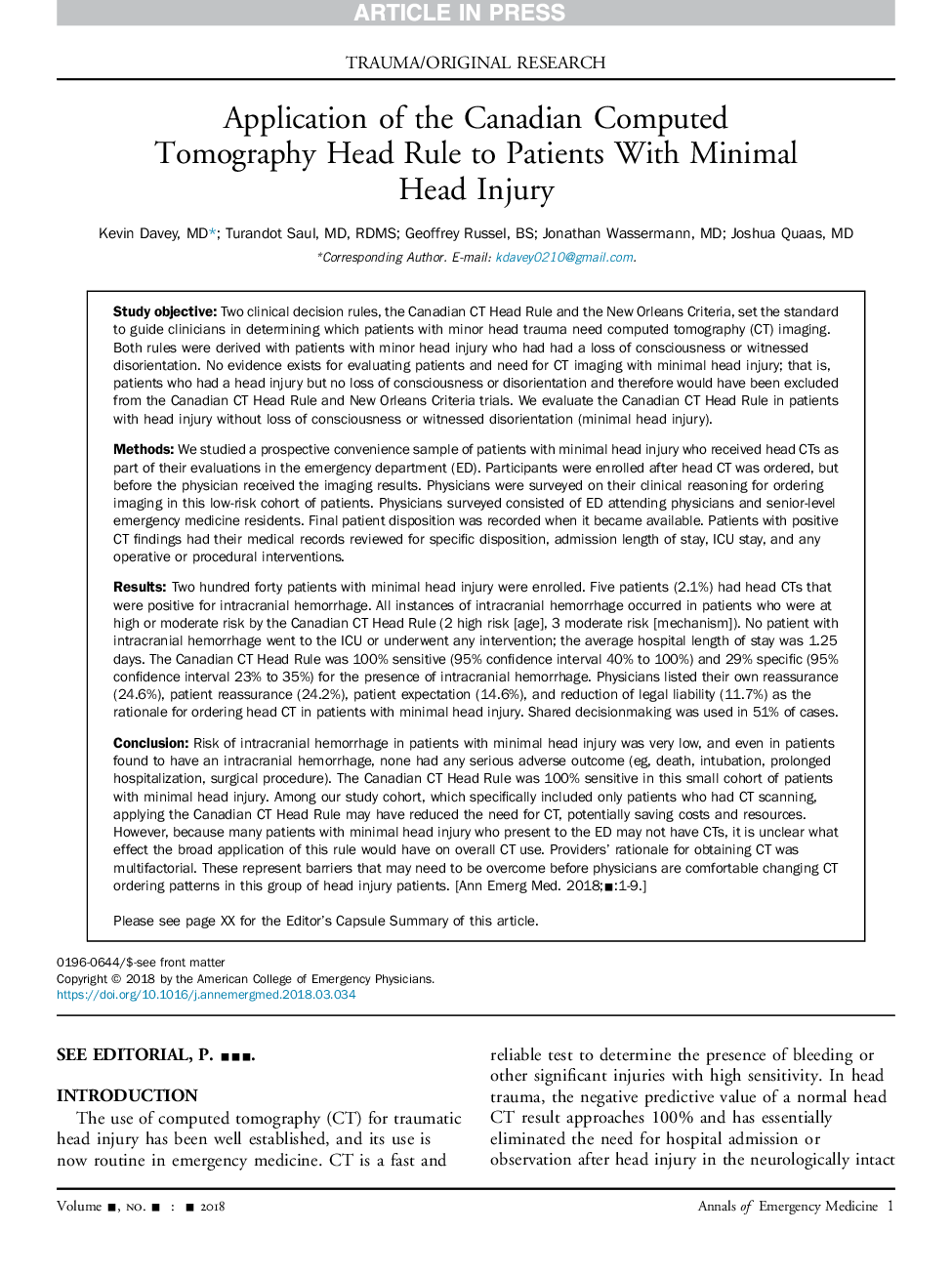| Article ID | Journal | Published Year | Pages | File Type |
|---|---|---|---|---|
| 10217239 | Annals of Emergency Medicine | 2018 | 9 Pages |
Abstract
Risk of intracranial hemorrhage in patients with minimal head injury was very low, and even in patients found to have an intracranial hemorrhage, none had any serious adverse outcome (eg, death, intubation, prolonged hospitalization, surgical procedure). The Canadian CT Head Rule was 100% sensitive in this small cohort of patients with minimal head injury. Among our study cohort, which specifically included only patients who had CT scanning, applying the Canadian CT Head Rule may have reduced the need for CT, potentially saving costs and resources. However, because many patients with minimal head injury who present to the ED may not have CTs, it is unclear what effect the broad application of this rule would have on overall CT use. Providers' rationale for obtaining CT was multifactorial. These represent barriers that may need to be overcome before physicians are comfortable changing CT ordering patterns in this group of head injury patients.
Related Topics
Health Sciences
Medicine and Dentistry
Emergency Medicine
Authors
Kevin MD, Turandot MD, RDMS, Geoffrey BS, Jonathan MD, Joshua MD,
